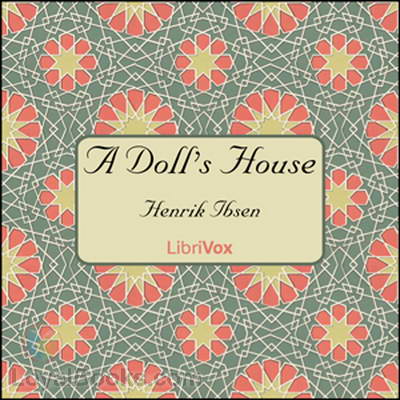
Nineteenth century attitudes towards marriage, the role of women, morality and the search for identity are brilliantly explored in Henrik Ibsen’s three act play, A Doll’s House. It was highly controversial and received with a sense of outrage among opinion leaders in Europe. Many thinkers like August Strindberg lashed out at Ibsen for portraying the sacred institution of marriage in such a derogatory way.
A Doll’s House, written in the original Danish, was first performed at the Royal Theater in Copenhagen in 1879. The ending of the play, where the heroine, Nora decides to leave her sham of a marriage aroused the ire of many viewers and critics at that time.
The play portrays Nora Helmer who is the pampered wife of a wealthy banker, Torvald Helmer. He treats Nora as a parent would pamper and indulge a child, calling her his “little squirrel” and constantly teasing and making fun of her habits and personality. When Nora’s old friend Kristine Lind drops in with a request that Nora put in a word to Torvald about finding Kristine a job in the bank, things take a dramatic and unexpected turn. Nora’s entire world turns upside down and she gradually comes to realize that she has been living a life that’s a mere facade. Though she has taken serious decisions that have protected her family, she has always been regarded as a helpless and incompetent infant. As the play progresses, Nora’s gradual realization of her own true powers and strengths lead to the stunning climax.
The first English production of A Doll’s House was an adaptation by Henry Jones and Henry Herman, who re-titled it Breaking a Butterfly. English audiences were prevented from watching a real translation of the play for many decades by a ban order passed by the government. However, today with more liberal thinking, the rise of the feminist movement and a more broad and humanist ideology prevailing, A Doll’s House can be read or watched almost anywhere in the world without restrictions.
As a revolutionary play that attacked the oppressive and inhuman mind-set of traditional, patriarchal social orders throughout the world, A Doll’s House is a remarkable and thought provoking work of literature. It not only addresses the place of women in society, but also that of men and how the usefulness of each is essential for healthy family life and child rearing.
It is relevant even today, when perhaps such attitudes still persist though things may seem to have changed on the surface, more than a century after it was written.

Other Audiobook
Audiobook: St. John Chrysostom on 1 Timothy
Timothy was one of the disciples of the Apostle Paul, who had a deep affection
Audiobook: Lost God
The first-century scholar and historian Plutarch tells a strange tale of sailors at sea, who
Audiobook: Favole di Jean de La Fontaine: Libro 11
Nei 12 volumi delle “Favole” (1669 – 1693) Jean de La Fontaine rinnovò la tradizione
Audiobook: Grotesques and Fantasies
A set of often funny, sometimes tragic stories by Israel Zangwill. Most famous for his
Audiobook: Union and Communion – or Thoughts on the Song of Solomon
This little book, whose design is to lead the devout Bible student into the Green
Audiobook: Birth, Baptism, Temptation, and Early Ministry of Jesus Christ – Commentary on the Gospel of St Matthew
Homilies 1 – 14 of Saint John Chrysostom’s commentary on the Gospel according to Saint
Audiobook: Mrs. Bindle
Herbert Jenkins’ most popular fictional creation was Mr. Joseph Bindle, who first appeared in a
Audiobook: Memoirs of a White Elephant
“We are told by writers of antiquity that elephants have written sentences in Greek, and
Audiobook: Annals Vol 2
The Annals was Tacitus’ final work, covering the period from the death of Augustus Caesar
Audiobook: Elementary Forms of the Religious Life
A study and analysis of religion as a social phenomenon by French sociologist Émile Durkheim.
Audiobook: Life of Benjamin Franklin
This little book was intended for the education of school children and includes tales, sketches
Audiobook: Cave Twins
Lucy Perkins has given us many books featuring twins that give a child insight into